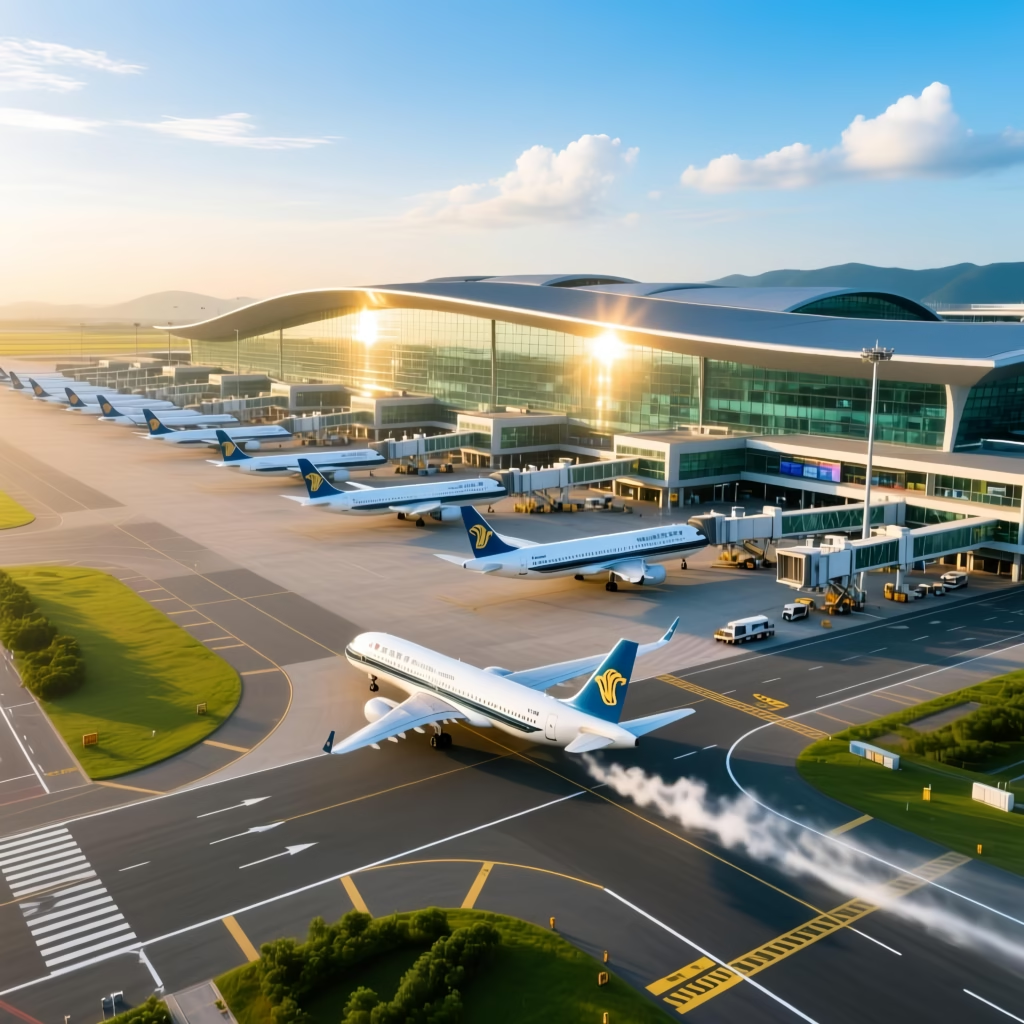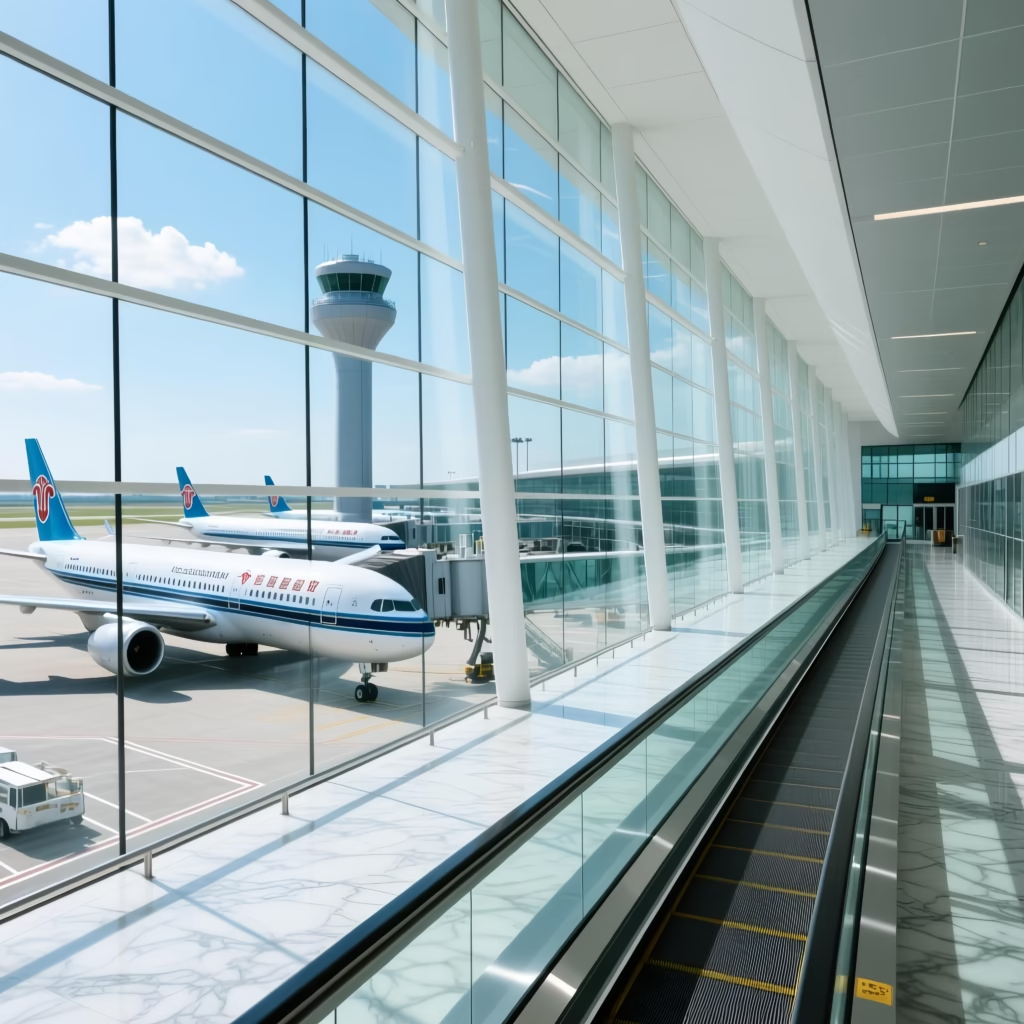Soaring Through the Middle Kingdom: A Guide to China’s Top 5 Airports 2025,
China’s meteoric rise as an economic powerhouse is mirrored in the skies above it. The nation’s aviation sector has exploded, with airports that are no longer just transit points but sprawling, futuristic cities in their own right. They are the vital arteries connecting the Middle Kingdom to the rest of the world.
Gone are the days when a handful of international gateways dominated. Today, China boasts a network of world-class airports. But which ones are the biggest and busiest? We’re diving into the top 5 airports by passenger traffic (based on 2023 data, the latest full year available) to see what makes them tick, from their staggering passenger numbers to their crucial role in global supply chains.
Guangzhou Baiyun International Airport (CAN)
ICAO Code: ZGGG | IATA Code: CAN
The Gateway to Southern China
For years, Guangzhou Baiyun has been a titan of Chinese aviation, and in 2023, it reclaimed its title as the busiest airport in China, handling over 63 million passengers. As the primary hub for China Southern Airlines, the world’s sixth-largest airline by passengers, CAN is a critical node for both domestic and international travel, especially within the Asia-Pacific region.
- Throughput (2023):
- Passengers: ~63.1 million (1st in China)
- Cargo & Mail: ~2.16 million tonnes (3rd in China)
- Major Cargo Routes:
Leveraging its location in the Pearl River Delta, a global manufacturing hub, CAN is a cargo powerhouse. Its main freight corridors connect to:- North America: Los Angeles, Chicago, Mexico City
- Europe: Amsterdam, Frankfurt, London
- Sou Asia & Oceania: Singapore, Kuala Lumpur, Sydney, Dubai
- What’s Trending? Baiyun is a pioneer in China’s “smart airport” initiative. It has extensively deployed facial recognition technology for check-in, security, and boarding, creating a nearly seamless passenger experience. Its massive Terminal 2, which opened in 2018, was designed to handle the growing demand and solidify its status as a leading international hub.
Shanghai Pudong International Airport (PVG)
ICAO Code: ZSPD | IATA Code: PVG
The Global Cargo King
While Guangzhou leads in passengers, Shanghai Pudong is the undisputed champion of air freight in China and consistently ranks among the top 3 busiest cargo airports globally. Serving as the main hub for China Eastern Airlines and a major hub for the cargo airline FedEx, PVG is the primary international gateway for Shanghai, China’s financial capital.
- Throughput (2023):
- Passengers: ~54.5 million (2nd in China)
- Cargo & Mail: ~3.8 million tonnes (1st in China)
- Major Cargo Routes:
PVG’s cargo network is arguably the most comprehensive in China, moving everything from high-value electronics to fresh produce and pharmaceuticals. Key routes include:- Europe: Frankfurt, Amsterdam, Paris, Moscow
- North America: Chicago, Los Angeles, Anchorage (a key cargo stopover)
- Asia: Tokyo, Seoul, Hong Kong, Singapore
- What’s Trending? A major talking point is PVG’s role in the global supply chain. During the pandemic, its resilience was critical. A recent case study highlighted how PVG’s dedicated cargo facilities and streamlined processes for handling medical supplies and e-commerce goods became a model for other major airports worldwide. Its proximity to the Port of Shanghai also creates a powerful air-sea intermodal logistics hub.
Beijing Capital International Airport (PEK)
ICAO Code: ZBAA | IATA Code: PEK
The Political and Cultural Heart
For decades, PEK was the undisputed #1 airport in China, a symbol of the nation’s opening to the world. While it now operates in a unique dual-airport system, it remains a vital hub. As the main base for Air China and a Star Alliance hub, PEK is heavily focused on both domestic political connections and major international routes.
- Throughput (2023):
- Passengers: ~53.5 million (3rd in China)
- Cargo & Mail: ~1.11 million tonnes
- Major Cargo Routes:
While its cargo volume is lower than its southern counterparts, PEK handles significant high-value and time-sensitive goods.- Europe: Frankfurt, Paris, London
- North America: San Francisco, Vancouver, New York
- Asia-Pacific: Tokyo, Seoul, Singapore, Hong Kong
- What’s Trending? The biggest story for Beijing is the PEK-PGX dynamic. Since the opening of the colossal Daxing International Airport (PKX) in 2019, airlines have been split. Air China and Star Alliance partners remain primarily at PEK, while other SkyTeam and Oneworld members have moved to PKX. This division has reduced congestion at PEK but can be confusing for travelers. PEK is now focusing on optimizing its operations as a more mature, established hub.
Shenzhen Bao’an International Airport (SZX)
ICAO Code: ZGSZ | IATA Code: SZX
The Runway of China’s Silicon Valley
Shenzhen’s airport is as dynamic and innovative as the city it serves. Located in the heart of China’s tech hub, home to giants like Huawei and Tencent, SZX has seen explosive growth. It’s a major hub for Shenzhen Airlines and a key focus city for China Southern.
- Throughput (2023):
- Passengers: ~52.9 million (4th in China)
- Cargo & Mail: ~1.6 million tonnes (4th in China)
- Major Cargo Routes:
SZX is a specialist in transporting high-tech goods, components, and e-commerce packages. Its cargo routes are strategically aligned with global tech supply chains.- North America: Los Angeles, Chicago, Ontario (California)
- Europe: Frankfurt, Amsterdam, Liege (a major European cargo hub)
- Asia: Singapore, Tokyo, Kuala Lumpur
- What’s Trending? Shenzhen is aggressively expanding. The opening of its new Satellite Concourse in 2021 significantly increased capacity. The hottest topic is the construction of its third runway, which will further boost its ability to handle both passenger and traffic, cementing its role as a key competitor to Hong Kong (HKG) and Guangzhou (CAN) in the Greater Bay Area.
Chengdu Tianfu International Airport (TFU)
ICAO Code: ZUTF | IATA Code: TFU
The Rising Star of Western China
Chengdu’s rise is one of the most significant stories in Chinese aviation. In 2021, the city opened the brand-new, state-of-the-art Tianfu International Airport (TFU) to handle future growth, while the older Shuangliu Airport (CTU) was repurposed for domestic flights. In just its first few years, TFU has rocketed into the top 5, symbolizing China’s “Go West” policy.
- Throughput (2023):
- Passengers: ~44.8 million (5th in China)
- Cargo & Mail: ~245,000 tonnes (Note: This is for TFU only; combined with CTU, Chengdu’s total is much higher)
- Major Cargo Routes:
TFU is designed to be a major gateway to Western China and a key hub in China’s “Belt and Road Initiative.” Its cargo routes are expanding rapidly.- Europe: Frankfurt, Amsterdam, Moscow, Budapest
- North America: Los Angeles, Vancouver
- Asia & Middle East: Delhi, Dubai, Singapore
- What’s Trending? TFU is a “smart airport from scratch.” It was built with biometric gates, 5G connectivity, and autonomous baggage tractors. It’s also a Level 4F airport, meaning it can handle the world’s largest aircraft, like the Airbus A380, without any restrictions. Its rapid growth is a frequent topic on social media, with many marveling at how quickly it has become a major international player.
China’s top airports are more than just concrete and steel; they are dynamic ecosystems that reflect the country’s ambition, technological prowess, and economic vitality. From the cargo behemoth in Shanghai to the tech-focused hub in Shenzhen and the rising star in Chengdu, these airports are the gateways to understanding modern China. As they continue to expand and innovate, they will undoubtedly play an even greater role in shaping the future of global air travel.
A Guide to China’s Top 5 Airports 2025
Soaring Through the Middle Kingdom: A Guide to China’s Top 5 Airports 2025, China’s meteoric…
The Ultimate Guide to Sourcing & Shipping Christmas Ornaments from China
The Ultimate Guide to Sourcing & Shipping Christmas Ornaments from China. The holiday season is…
Decoding Shunde: The Ultimate Guide to the World’s Appliance Capital
Decoding Shunde, If you’ve ever turned on a microwave, blended a smoothie, or adjusted your…




